To mark their first return to the stage since the 70th Anniversary Gala in January, ENB’s Emerging Dancer Competition was live streamed on Tuesday 22 September. This year the six finalists – Ivana Bueno, Carolyne Galvao, Miguel Angel Maidana, Victor Prigent, Emily Suzuki and William Yamada – were judged on a classical pas de deux, and a contemporary duet choreographed by ENB’s Associate Choreographer Stina Quagebeur, Lead Principal Jeffrey Cirio and choreographer Mthuthuzeli November.
Throughout you had to keep reminding yourself that they were all young dancers in the first stages of their careers, and that they’d had no proper intensive dancing for more than six months, such was the level of commitment and good dancing on show. (Guerreiro)
Julia: This quote from Teresa Guerreiro resonates with me – how hard did those dancers work on this project to reach the standards they showed in this competition? And in such demanding choreography?!
Rosie: Yes, it’s incredible. The dancer I really want to start off with is Emily Suzuki – not because she and Victor Prigent were the first couple to dance in each section, but because she came to my notice last year in Pina Bausch’s Rite of Spring as The Chosen One. I felt very lucky to see three different dancers in the main role, Francesca Velicu, Precious Adams and Emily, but Emily was the one I wasn’t familiar with, so I’ve been looking out for her ever since. But until now I don’t recall seeing her in a classical role – actually I could hardly imagine her in a classical role because her Chosen One was so raw. I was astonished at how exquisite she was in the Satanella pas de deux.
Julia: Yes! Also, the Satanella pas de deux is quite playful, and I think Emily’s lovely soft port de bras contributed to this light-hearted mood.
Rosie: I like that the playfulness is visible in the tricky timing, where the dancer has to finish the phrase with a swift unexpected port de bras or little quick-fire steps. Emily nailed it every time – as she did with the series of pirouettes from fifth with développé in the coda.
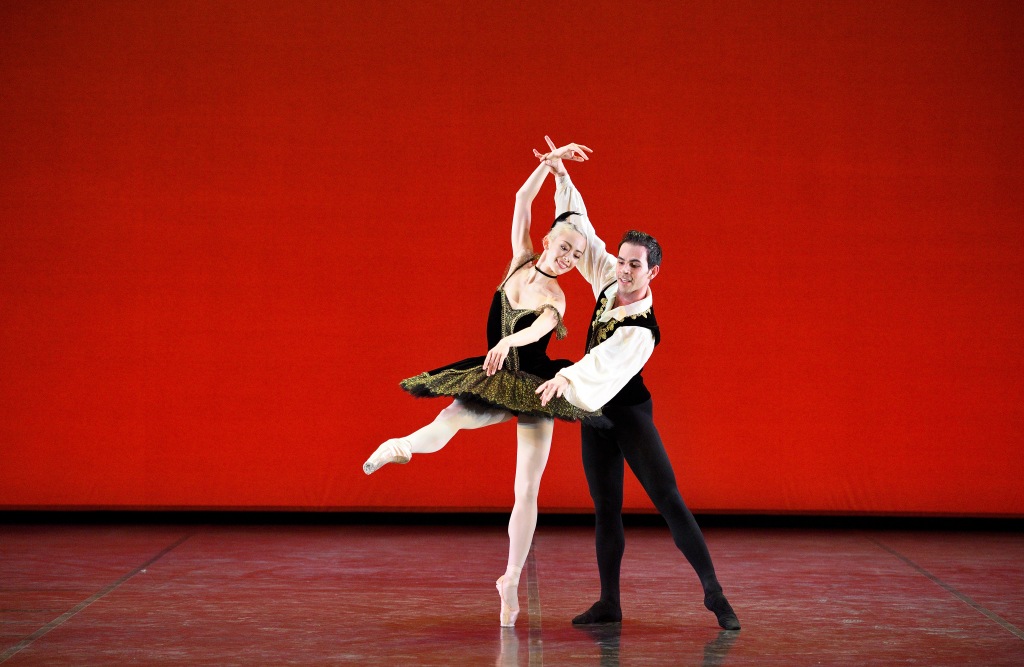
Emily Suzuki and Victor Prigent performing Satanella (c) Laurent Liotardo
Julia: Throughout, her lines were wonderfully elegant and her upper body held with ease and poise. It was lovely to watch these contrasting elements in her dancing – she makes it look very easy but I know from experience it is not easy at all!
Rosie: Ivana Bueno’s upper body was lush as well.
Julia: Yes, I agree, but let’s go back to Emily and Victor for a moment…
What I liked about Victor was his light, buoyant jumps. Sometimes his footwork could have been a bit more precise, but it didn’t really take away from the general joie de vivre of his performance.
Rosie: Maybe this contributed to his winning the People’s Award. There were some beautiful moments, like the finish to his variation – his controlled landing from tour en l’air to the kneeling end position was very satisfying. In fact Ivana has a similar moment at the end of her variation.
Julia: I thought Emily and Victor’s partnering was impressive for dancers at this stage of their careers. Partnering is always challenging yet also so important in classical pas de deux, in part because it has to look seamless and effortless.
Rosie: Sometimes it’s also a challenge to bring a true sense of character to classical pas de deux, yet it wasn’t surprising to me that all three couples managed this so well – it seems to be integral to the identity of the Company.
Julia: Yes, we’ve spoken and written about this before, and I remember we talked to James Streeter about it when we interviewed him for the Spotlight post.
James produced this whole event. Despite the current situation ENB dancers are finding ways of developing their careers and exploring new skills.
Rosie: Jeffrey Cirio is another dancer who has been exploring alternative skills: he choreographed the contemporary piece “both of two…” for Carolyne Galvao and Miguel Angel Maidana. For me this couple not only illuminated their characters, but what was more unusual, I thought, was the way they accentuated the imagery through their articulation of the choreography in the Diana and Acteon pas de deux.
Julia: Yes, I think they showed this in Jeffrey’s duet as well. Particularly during the first section when Carolyne is supported on Miguel’s back and the two dancers mirror one another’s arm gestures in varying ways … it seals the imagery of the title: “both of two…”.
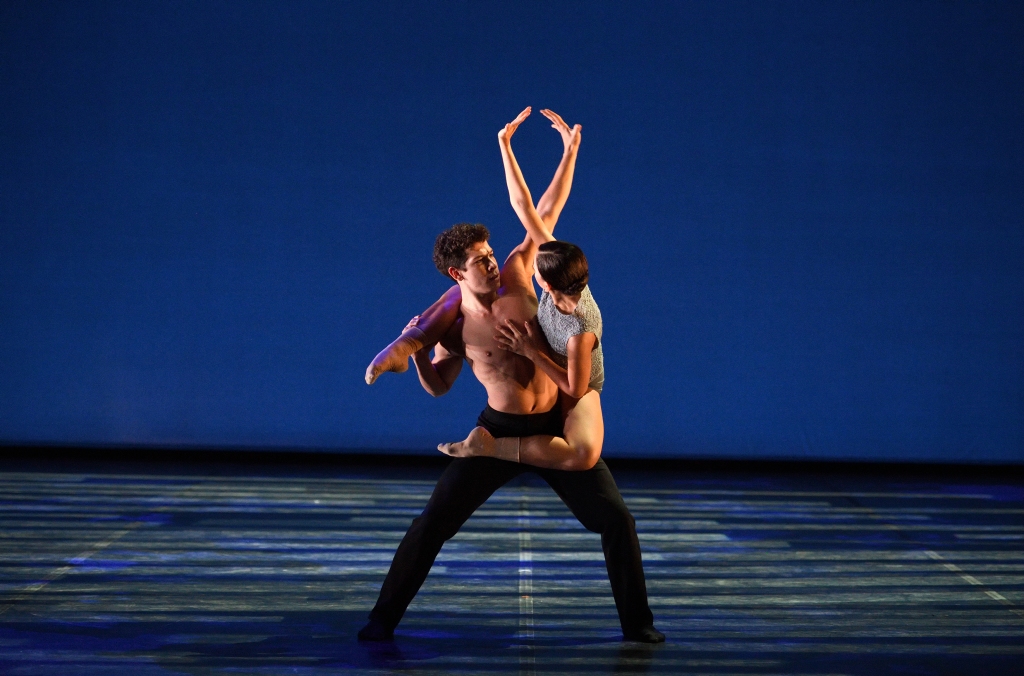
Carolyne Galvao and Miguel Angel Maidana performing “both of two…”(c) Laurent Liotardo
Rosie: There’s a lot of bow and arrow imagery in the Diana and Acteon pas de deux, because it’s about Diana the Huntress. The imagery is always visible in performance, but I don’t think I’ve ever seen it pervade the choreography to this extent before. It was so clear not only in the shape but in the sharp dynamics of Carolyne’s port de bras – just as if she were releasing the arrow from her bow. She even embellished her fouettés with a port de bras that seemed to represent taking an arrow from her quiver and a preparing to draw back her bow before taking aim. Quite extraordinary! So extraordinary in fact that I did some research and discovered that National Ballet of Cuba do that version of the fouettés. But I had never seen it before.
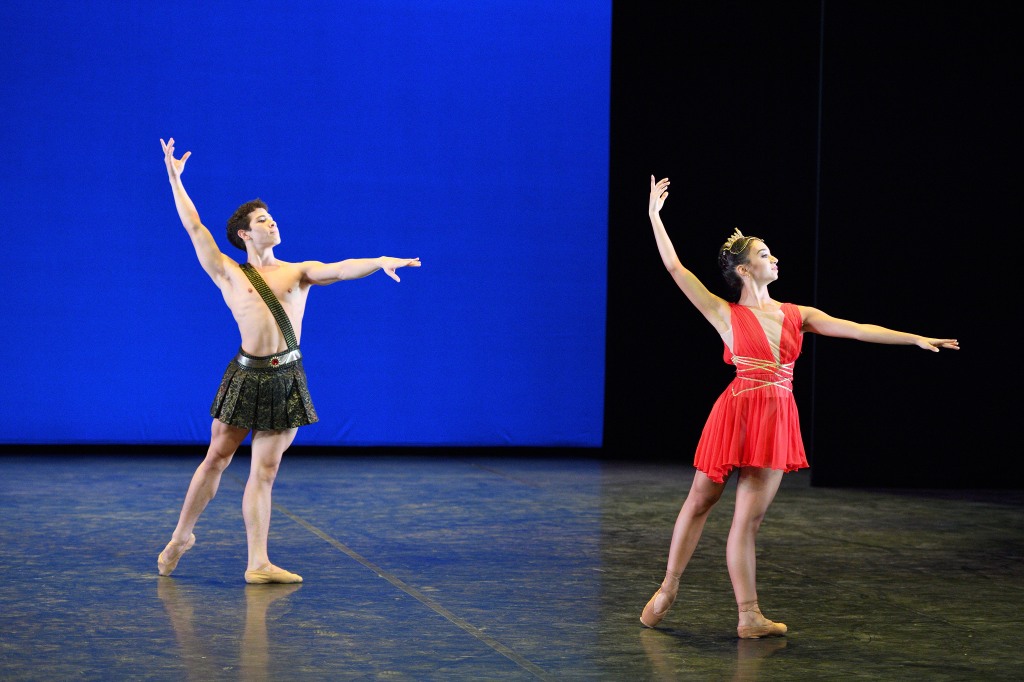
Carolyne Galvao and Miguel Angel Maidana performing Diana and Acteon (c) Laurent Liotardo
Julia: Miguel was also very impressive rolling out all the virtuosic tricks that a pas deux of this kind relies on for its effect. In fact I thought he might win the competition. But the winner was Ivana with her silky turns. This makes her sound a bit like a one-trick pony, but nothing could be further from the truth…
Rosie: Yes, I noticed the quality of her turns during the first lockdown ballet class that Tamara Rojo taught online, when there were still a few dancers in the studio. But as you’ve implied, she has many other qualities that led to her winning the competition. We already mentioned the lushness of her upper body movement. Although I find both beautiful, I like the fact that she and Emily are quite distinct in style, with Emily having a more crystalline appearance – or at least that’s how I think of it.
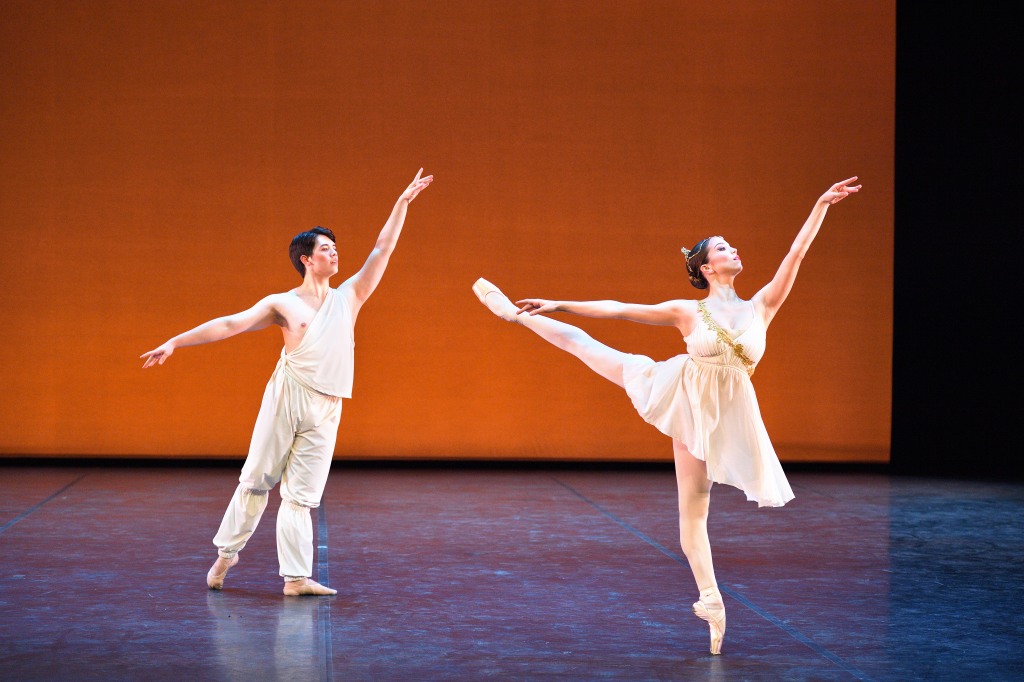
Ivana Bueno and William Yamada performing Talisman (c) Laurent Liotardo
Julia: Ivana also seems to me more expansive in her lines and use of space than Emily.
Rosie: Yes, I was struck by her expansiveness in Mthuthuzeli November’s “FULL-OUT”. Seems like an appropriate title – she really was dancing full out.
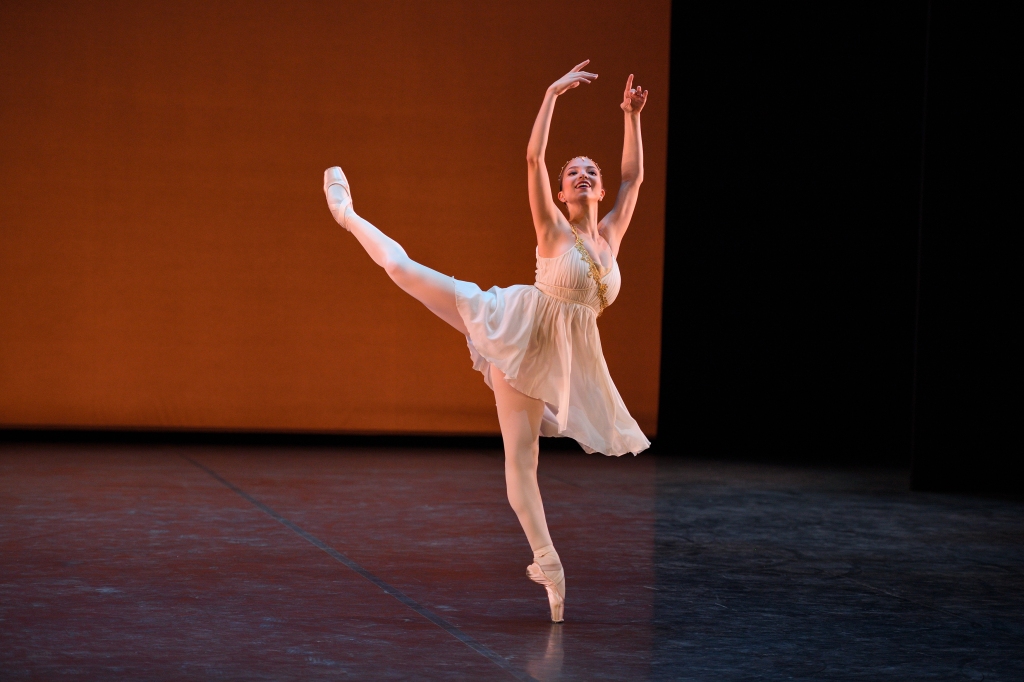
Ivana Bueno performing Talisman (c) Laurent Liotardo
Julia: I remember seeing Ivana in class when she first joined the company in 2018, and now I notice how much she’s developed over the last two years – she danced with such self-assurance and confidence.
Rosie: She’s talked about the importance of the working relationship with her partner William Yamada throughout the preparation for the competition. It was noticeable in the Talisman pas de deux how he showed her to best effect, particularly in the big lifts, where he held her so strongly, and then gently and gradually lowered her down so she was able to maintain her serenity.
Julia: I really appreciate that kind of skilled and considerate partnering.
Rosie: Tamara said that it was incredibly hard for the panel to pick a winner (“The Winner”). I loved Ivana’s performance and there was lovely detail in her technique, like all her jetés fondu were so soft, as if she were walking on a cloud. Still, my favourite was Emily. That’s just a personal thing.
Julia: Yes, her expressiveness in Stina Quagebeur’s “Hollow” is so clear even from this photo.

Emily Suzuki and Victor Prigent performing Hollow (c) Laurent Liotardo
Rosie: We seem to have talked a lot more about the female dancers than the male dancers. Well, we’ll see next year what happens – maybe the tables will be turned …
© British Ballet Now & Then
References
Guerreiro, Teresa. “ENB: Emerging Dancer Review”. CultureWhisper, 23 Sept. 2020, www.culturewhisper.com/r/dance/enb_emerging_dancer_review/15879. Accessed 26 Sept. 2020.
“The Winner of Emerging Dancer 2020 is …”. English National Ballet, 2020, www.ballet.org.uk/blog-detail/winner-emerging-dancer-2020/. Accessed 27 Sept. 2020.
One thought on “In Conversation: English National Ballet’s Emerging Dancer 2020”